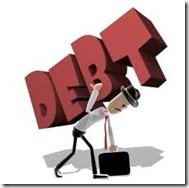Does the idea of saving tens of thousands of dollars appeal to you? If so, then read on!
 In addition to helping you save money through reduced consumption of resources, Eco-Cents also exists to help you save money by minimizing wasteful interest payments. The philosophy behind this connection is simple: fewer recurring expenditures equals greater funds available for more meaningful purposes, to include financing energy-saving measures. According to a recent economic report, consumer debt in 2010 totaled nearly $2.4 Trillion dollars, of which two-thirds (or $1.6 Trillion) was associated with loans. Because of being saddled with debt, it’s no wonder that to most people, sustainability simply means surviving.
In addition to helping you save money through reduced consumption of resources, Eco-Cents also exists to help you save money by minimizing wasteful interest payments. The philosophy behind this connection is simple: fewer recurring expenditures equals greater funds available for more meaningful purposes, to include financing energy-saving measures. According to a recent economic report, consumer debt in 2010 totaled nearly $2.4 Trillion dollars, of which two-thirds (or $1.6 Trillion) was associated with loans. Because of being saddled with debt, it’s no wonder that to most people, sustainability simply means surviving.
To put the extent of consumer debt into perspective, it’s nearly half of the entire unclassified U.S. federal budget. However, unlike the deficit associated with the federal budget which may never be resolved due to politics, consumers don’t need Congressional approval to reduce their debt…they just need a plan that they can afford to stick with.
The greatest monthly expense for most Americans is for shelter, which means that the greatest monthly savings could be achieved by paying off their home loans. This idea isn’t fantasy; it’s completely feasible through informed investing.
In 2010, America had an inventory 131.7 million homes, of which nearly two-thirds were owner-occupied and the remainder were occupied by tenants or were vacant. Although the information in this section may therefore seem to not apply to a third of the US population, because renters likely hold other loans for automobiles and student loans and/or may someday become homeowners, the information in the following pages is still highly relevant.
The following sub-sections in the Loan-Cents section of this website pertain to loan interest in general, understanding Annualized Percentage Rates (APR), and expediting loan payback time.
